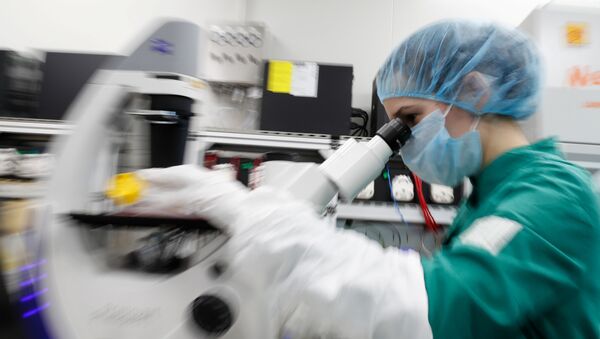Certain sequences in the novel coronavirus indicate that it does not stem from nature, but has probably been developed under lab conditions, Norwegian vaccine scientist Birger Sørensen has ventured in an interview with national broadcaster NRK.
In a recent study with British Professor Angus Dalgleish about spike proteins in the novel coronavirus, Sørensen claimed it contained “inserted sections”, which may indicate its man-made origin. The research duo also pointed out that the virus has hardly mutated since it began to infect humans, suggesting that it was already fully adapted to humans. According to Sørensen, this is quite unusual for viruses that cross species barriers.
Sørensen claims that the virus has properties that differ greatly from SARS, as it attaches itself to skin cells in the upper respiratory tract, which is why patients lose the sense of taste and smell and develop a dry cough, and has never been detected in nature. The Norwegian scientist went so far as to speculate about its possible US or Chinese origin.
“When we describe the virus technically, we see that it has not come about through natural development. This is done by Americans and Chinese, as part of what's called 'gain of function' studies. It is done all over the world. You say you don't, but it happens all the time in advanced labs”, Sørensen told national broadcaster NRK.
China and the US have for many years collaborated on coronavirus research. In so-called gain of function tests, the virus's infectivity is artificially increased to make it easier to use in scientific experiments. Such manipulated viruses are called “chimeras”.
China, where the novel virus first appeared, is yet to identify the index patient and the exact location where the outbreak started. However, Sørensen believes that Chinese scientists were the first to discuss the modified sequences in the virus. In recent months, he argued, China has put a lid on all such studies.
“The inserted sequences should never have been published. Had it been today, it would never have happened. It was a big mistake the Chinese made. The inserted sequences have a functionality that we describe. We explain why they are essential. But the Chinese pointed them out first”, Sørensen said.
Sørensen is also skeptical about the current vaccine candidates, which, he ventured, will be at high risk of side effects because they target the so-called spike protein of the virus, where 80% of the genetic material is human-like.
“78.4% of the epitopes in the spike protein are identical to us humans. And the consequence of this is that there is a 78.4% probability of having some form of side effects from vaccines that target this protein”, he said.
Sørensen is now working on developing his own vaccine candidate called Biovacc-19, which targets the 20% of the virus's genetic material that is not shared by humans. However, there has been little Norwegian interest in funding a vaccine trial in Norway.
Mixed Reactions
Sørensen's bold statements triggered criticism from fellow Norwegian professionals. Immunologist Anne Spurkland ventured that the argument about the virus having hardly mutated is “unreasonable and illogical”, as the coronavirus has its own abilities to correct itself, and is unlike HIV that mutates a great deal. Spurkland also emphasises that even though the coronavirus is more contagious than SARS, this alone doesn't mean that the virus is man-made. She went so far as to suggest that Sørensen has economist interests.
Vaccine researcher Gunnveig Grødeland suggested that it is not yet possible to determine whether the virus originated naturally or as part of so-called gain-of-function studies conducted in laboratories in several parts of the world.
Nevertheless, the research duo was backed by former head of Britain's MI6 head Sir Richard Dearlove who stated that the virus that triggered the pandemic may have escaped from a laboratory, in his own words “as an accident”.
These claims were subsequently dismissed by Downing Street as “fanciful”.
Debate on Coronavirus Origins
Claims that the virus may have leaked from a laboratory at the Wuhan Virology Institute, one of China's most advanced virus laboratories, with the highest security rating, have been around for months, making their way from fringe discussions and conspiracy theories into political discourse.
Last month, US Secretary of State Mike Pompeo claimed there was “enormous evidence” that the coronavirus outbreak originated in a Chinese laboratory, while US President Donald Trump has repeatedly blamed China for the pandemic and even designated COVID-19 the “Chinese virus”.
The claims, however, have been completely rebuffed as "pure fabrication” by the the institute's management, which stressed that the lab has never had viruses similar to SARS-CoV-2.
As of today, there is near-unanimous consensus among the international community that the respiratory virus first originated in animals, most likely bats or pangolins, and subsequently jumped to humans.
The World Health Organisation (WHO) also stressed that existing evidence pointed to the coronavirus originating in animals in China late last year and was not man-made in a lab.




